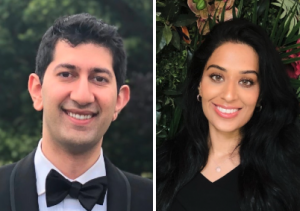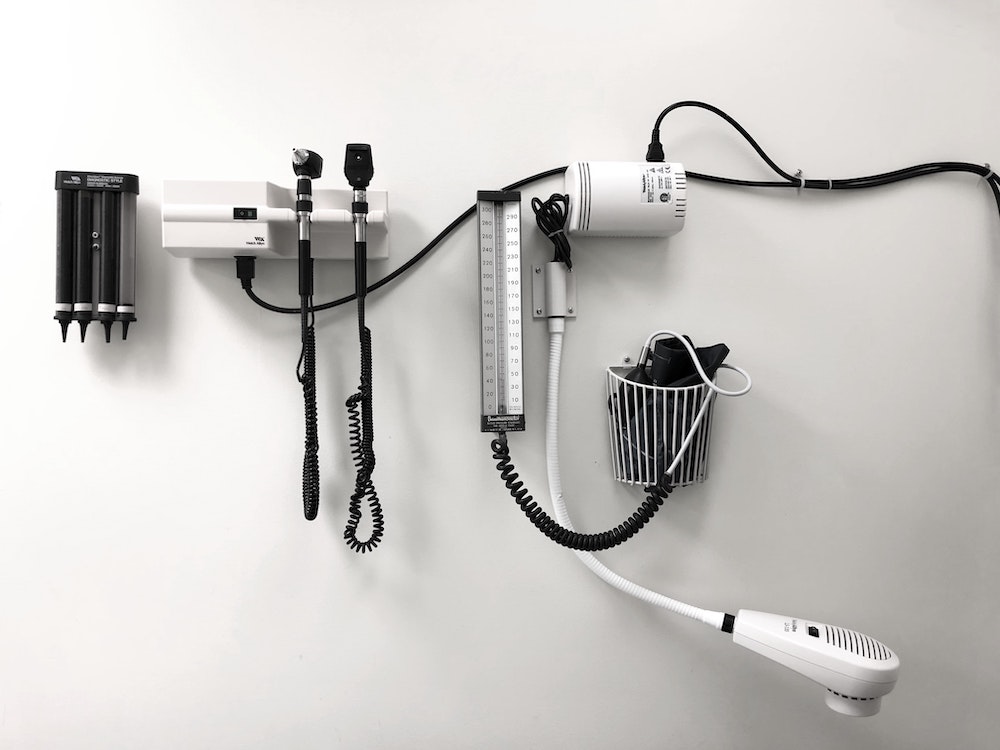 Sohaib Rufai is an NIHR Doctoral Fellow and ST4 in ophthalmology at Great Ormond Street Hospital for Children NHS Foundation Trust. You can follow him on Twitter: @SohaibRufai.° Tania Aslam Rufai is a GP ST2 at Medway NHS Foundation Trust in the Kent, Surrey, Sussex (KSS) Deanery.
Sohaib Rufai is an NIHR Doctoral Fellow and ST4 in ophthalmology at Great Ormond Street Hospital for Children NHS Foundation Trust. You can follow him on Twitter: @SohaibRufai.° Tania Aslam Rufai is a GP ST2 at Medway NHS Foundation Trust in the Kent, Surrey, Sussex (KSS) Deanery.
As the COVID-19 pandemic continues to unfold, world leaders are placing increasing importance on public health measures to limit human-to-human transmission.(1) The route of transmission is primarily by respiratory droplet spread and direct contact.(2) Whilst the majority of infected individuals display signs and symptoms including fever and coughing, transmission is also possible in asymptomatic carriers.(2,3)
We propose the following near telemedicine protocol for GPs – a modified version of that recently proposed by Gunasekera for ophthalmologists.
We propose the following near telemedicine protocol for GPs – a modified version of that recently proposed by Gunasekera for ophthalmologists:°
- A telephone or video triage with a GP or nurse practitioner can determine whether physical examination is required. If required, the patient is given an appointment to attend the surgery.
- The patient enters Room 1 with a freestanding tablet on a video call with the GP, who is sitting in Room 2 separately.
- The GP explains they will perform the majority of the consultation over the tablet and only enter Room 1 to perform clinical examination, during which talking is only allowed at the discretion of the GP.
- After taking the history, the GP dons personal protective equipment (PPE), enters Room 1 to perform physical examination, then exits the room.
- The GP finishes the video consultation from Room 2 and, where required, leaves a prescription outside Room 1 for the patient to collect on departure.
This protocol could substantially cut down the face-to-face component of GP consultations, thereby limiting exposure time. Where possible, the patient can also be given a mask to wear to further limit the risk of transmission. A pure video consultation eliminates all risk of transmission, as championed by Professor Trisha Greenhalgh and colleagues. 6) However, wherever physical examination cannot be avoided, our proposed protocol could be used.
This could also be implemented across a range of specialties and healthcare professions, including by nurse practitioners, wherever there is division in time between consultation and physical examination. We acknowledge that not all providers may have the required room space and equipment to implement this protocol. However, wherever possible, we hope this protocol could limit the transmission of COVID-19 and help protect healthcare professionals and patients.
References
1. Wilder-Smith A, Chiew CJ, Lee VJ. Can we contain the COVID-19 outbreak with the same measures as for SARS? [published online ahead of print, 2020 Mar 5]. Lancet Infect Dis. 2020;S1473-3099(20)30129-8. doi:10.1016/S1473-3099(20)30129-8
2. Guan WJ, Ni ZY, Hu Y, et al. Clinical Characteristics of Coronavirus Disease 2019 in China [published online ahead of print, 2020 Feb 28]. N Engl J Med. 2020;10.1056/NEJMoa2002032. doi:10.1056/NEJMoa2002032
3. Bai Y, Yao L, Wei T, et al. Presumed Asymptomatic Carrier Transmission of COVID-19 [published online ahead of print, 2020 Feb 21]. JAMA. 2020;e202565. doi:10.1001/jama.2020.2565
4. Rocklöv J, Sjödin H, Wilder-Smith A. COVID-19 outbreak on the Diamond Princess cruise ship: estimating the epidemic potential and effectiveness of public health countermeasures [published online ahead of print, 2020 Feb 28]. J Travel Med. 2020;taaa030. doi:10.1093/jtm/taaa030
5. Centers for Disease Control and Prevention. Coronavirus Disease 2019 (COVID-19) – Healthcare Personnel with Potential Exposure to COVID-19. 7 March 2020. https://www.cdc.gov/coronavirus/2019-ncov/hcp/guidance-risk-assesment-hcp.html [Accessed 22 March 2020]
6. Greenhalgh T, Wherton J, Shaw S, Morrison C. Video consultations for covid-19. BMJ. 2020;368:m998. Published 2020 Mar 12. doi:10.1136/bmj.m998
Featured photo by Abby Anaday on Unsplash






